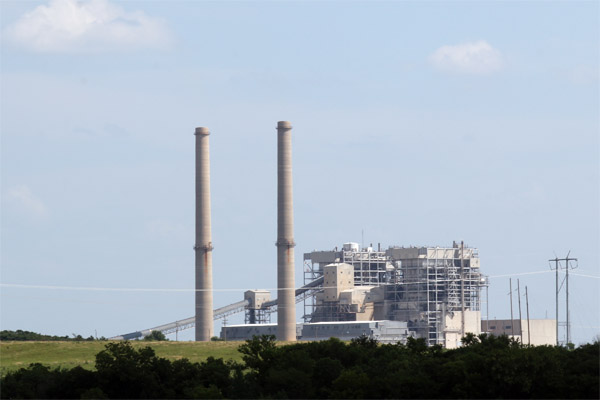EPA In the Crosshairs as Oklahoma’s Inhofe Gains Sway Over Climate Policy
-
Logan Layden

Andrew Revkin / Flickr
Oklahoma U.S. Senator James Inhofe at an impromptu news conference during climate talks in Copenhagen in 2009.
The Republican wave that put the party back in full control of Congress also put Oklahoma U.S. Senator Jim Inhofe back in charge of the Senate committee that oversees the country’s environmental policies.
Political Climate Change
The political shift in Washington comes at time when — from President Barack Obama’s Clean Power Plan to enforcement of the Regional Haze Rule that’s riled Oklahoma officials — the U.S. Environmental Protection Agency has a lot of things in the air.
Election night was a rough one in general for the left, but some of the tears spilled on Election Day were over the specific issue of climate change, and what a fully Republican-controlled Congress might do to thwart President Obama’s environmental efforts.
That is because when voters elected Republicans to a majority of both chambers of Congress, they effectively put Oklahoma Senator and longtime climate change denier James Inhofe in charge of the Senate’s climate policy.
And it’s statements like this, which Inhofe made to StateImpact in a recent interview, that worry those concerned about climate change:
“Our air is the cleanest it’s ever been. And now they’re pushing for these regulations, but the thing is, it’s not something you can look at cost/benefit of … Our air is already clean,” Inhofe says.
Derailing With Hearings and Riders
The EPA has the power to make environmental rules, so what, if anything, can Inhofe do to derail Obama’s plan to cut carbon emissions at coal plants, or the regional haze rule that’s meant to clear the air at national parks for example?
“Well, there are a lot of different things they can try. It’s unclear how successful they’ll be,” says Jack Lienke with the Institute for Policy Integrity at the New York University School of Law.
Lienke says there are four ways Congress can obstruct EPA rules.
“One thing that Senator Inhofe — as chair of the Environment and Public Works Committee in the Senate — and that other Republican leaders will get is oversight authority,” Lienke says. “So this is the ability to hold hearings, to issue document requests, to call witnesses.”
That won’t impact the EPA rules themselves, but burying the agency in hearings can slow it down and shine a spotlight on its activities. Lienke expects that tactic to be used a lot.
Overturning an existing rule, like regional haze or the mercury and air toxics standards, is a second option. But to do that, Congress would have to do something it has recently seemed incapable of doing: actually pass legislation.

Joe Wertz / StateImpact Oklahoma
Oklahoma Gas & Electric's coal-fired Sooner Plant in Red Rock, Okla.
The problem is the filibuster. Inhofe would need 60 votes in the Senate to end debate and force a vote. The third option is what’s called the Congressional Review Act, which allows Congress to nix a new rule within two months of it being finalized. Inhofe says that’s the best option for stopping newly finalized rules, like the carbon emission limits coming in June 2015.
“I will be introducing it on that day with 30 co-sponsors — you have to have 30 senators join you and I already have that,” Inhofe says. “Then it will go to just a straight up or down majority vote, not a supermajority, just 51 votes in the Senate.”
That gets Inhofe around the filibuster, but then there’s President Obama’s veto power, which he’d likely use to protect the cornerstone of his administration’s climate change policy. But, after talking to Democrats, Inhofe thinks he can get around that obstacle, too.
“I went back this week and talked to a bunch of them who lost their jobs,” Inhofe says. “They all, to the last one, blame Obama. So a lot of these guys that are coming … into cycle where they have to run for re-election in 2016, they’re going to be racing to override vetoes to separate themselves from the president.”
The final option would be to attach amendments to big, important spending bills that block funding for enforcement of EPA rules. Inhofe says he supports that effort, but only to a point. Right now he’s not willing to shut down the government over it.
